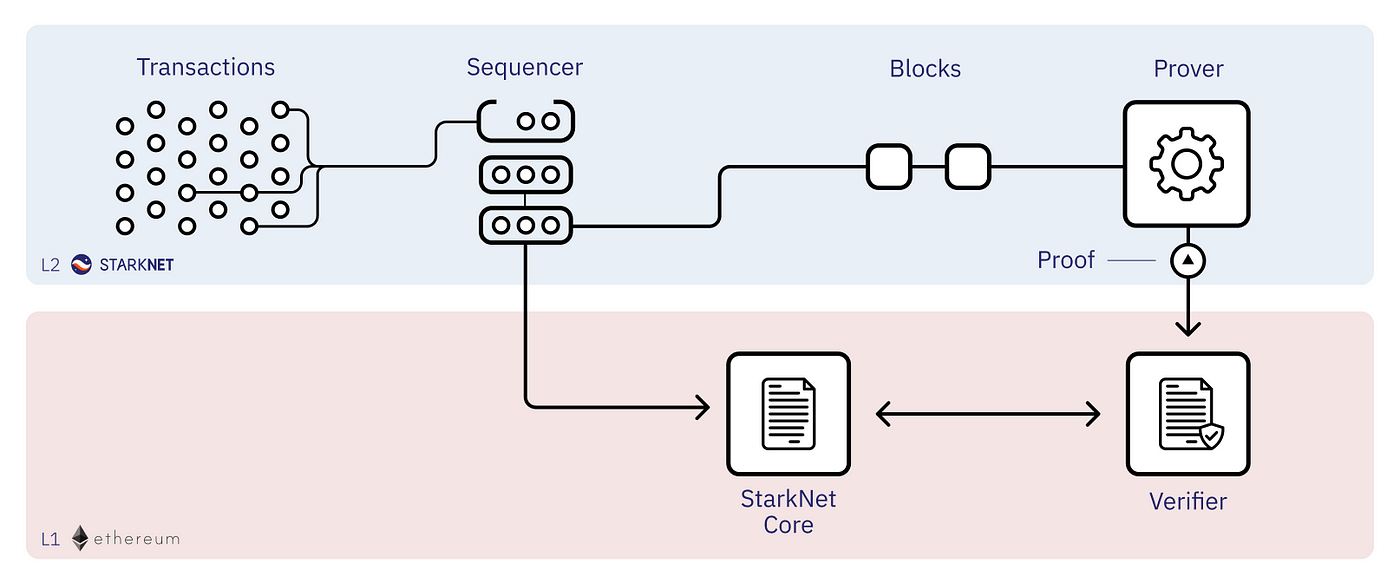What is Sequencer, Prover? Sequencer and Prover are indispensable positions to ensure the security, integrity and decentralization of Layer 2 platforms. So, what is special about Sequencer and Prover? Everyone, let’s find out in the article below. Please.
To understand more about Sequencer and Prover, people can refer to some of the articles below:
- What is Layer 2? Complete Guide to Layer 2 Solutions
- What is Optimistic Rollup? Overview of Optimistic Rollup
- What is Zk Rollup? Zk Rollup Solution Overview
What is Sequencer, Prover?
Overview of Sequencer and Prover
Sequencer and Prover are indispensable positions to ensure the security, integrity and decentralization of Layer 2 platforms. Each group has different functions and tasks on Layer 2 such as:
- Sequencer: Is the group whose role is to package transactions on Layer 2 and send them to Layer 1.
- Prover: Has the role of creating transaction proof for transactions that have been blocked.
To clearly understand the role and importance of these two groups in Layer 2, we will have to go through the working mechanism of Layer 2.
Layer 2 mechanism of action

Overall Layer 2 will operate according to the following mechanism:
- Step 1: User transactions will be sent to a mempool or placed in a queue, even some Layer 2 platforms operate on a “first come, first service” mechanism (note: Layer 2 mempools are independent of each other). with Layer 1).
- Step 2: Transactions at mempool will be verified by Sequencers and selected to be placed in bacth.
- Step 3: These bacth will be sent to Prover to create transaction proof for that bacth to prove to Layer 1, that bacth is a valid bacth. The proof here could be ZKP with ZK Rollup platforms. Optimistic Rollup platforms will not have Prover.
- Step 3: After that, the bacth with transaction proof will be sent by Sequencers to Layer 1.
- Step 4: Validators at Layer 1 will verify whether the transaction is valid or not through transaction proof authentication.
It can be seen that the Sequencer plays a similar role to a Validator on a Blockchain with a PoS consensus mechanism or a Miner on a Blockchain using PoW. However, the difference between Seuqencer and Validator or Miner lies in the fact that “Sequencer only arranges transactions into a bacth and sends that bacth to Layer 1, not doing the task of consensus and storage”.
The birth of Prover is a concept that is often not found in Layer 1 Blockchains. Prover’s goal is to create light, easy-to-prove transaction evidence so that Validators/Miners at Layer 1 must re-authenticate the entire thing. transactions in the block, just verifying the transaction proof is enough.
The problem that Layer 2s are having with Sequencer and Prover
In fact, being a Sequencer or Prover (especially a Sequencer) has many benefits similar to a Validator because they can see all transaction information. The benefits of those who have the right to arrange transactions into blocks are shared in detail in the article What is Miner Extractable Value (MEV)? MEV Mechanism of Action. So anyone wants to become a Sequencer.
Normally, with Layer 2 platforms in the early stages, in order to be a Sequencer, you usually have to have a relationship or KYC with the development team. So in the early stages of developing Layer 2 networks, if you want to keep the network stable, the number of Sequencers is often limited. This makes the Layer 2 network not as decentralized as people often think.
Therefore, often Layer 2 platforms will issue tokens so that everyone can use the platform’s native token as collateral to make a Sequencer. Of course, Prover is the same.
Some advantages and disadvantages of Sequencer & Prover
Some of the advantages of Sequencer and Prover include:
- Ensure integrity and security for users on Layer 2.
- Plays an important role in the smooth operation of Layer 2.
Some of the disadvantages of Sequencer and Prover include:
- Will not be decentralized in the early stages of development.
- Because the number of Sequencers is limited, they are very vulnerable if attacked, so close monitoring is required.
- Using a mempool, fees can be pushed up due to the Sequencer using its power.
Summary
It can be seen that Sequencer & Prover play an important role in maintaining the Layer 2 network. Hopefully through this article, people can understand more about what Sequencer and Prover are?


